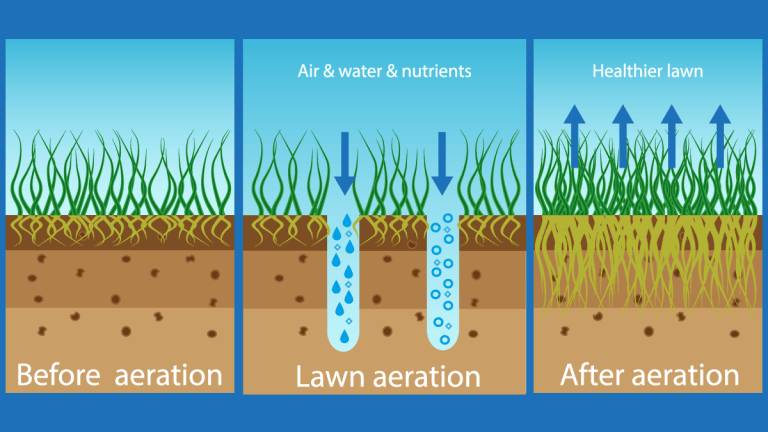
A beautiful lawn is a pride for any homeowner. It creates a welcoming atmosphere, enhances the curb appeal of the property, and provides a space for outdoor activities. But to keep the lawn healthy, lush, and green, it requires proper maintenance. One of the essential lawn care practices is aeration. In this blog post, we will explore what lawn aeration is and why it is essential for maintaining a healthy lawn.
What is Lawn Aeration?
Lawn aeration is the process of creating small holes in the soil by removing small plugs of soil, which are typically two to three inches in length. Aeration allows air, water, and nutrients to penetrate the soil and reach the roots of the grass. The process also helps to reduce soil compaction, allowing roots to grow more deeply, and enhancing the lawn’s overall health.
Why is Lawn Aeration Important?
Lawn aeration is crucial for several reasons, including:
1. Reducing Soil Compaction:
Soil compaction occurs when the soil becomes too tightly packed, which makes it difficult for water, air, and nutrients to penetrate the soil. Aeration helps to alleviate soil compaction, allowing the roots to access the necessary nutrients and water.
2. Improving Root Growth:
When soil is compacted, grass roots grow closer to the surface, making them more susceptible to drought and other environmental stresses. Aeration helps to encourage deeper root growth, making the grass more resilient and better able to withstand harsh conditions.
3. Enhancing Nutrient Absorption:
Aeration helps to improve the absorption of nutrients by the grassroots, which is essential for the lawn’s overall health and growth.
4. Reducing Thatch Build-Up:
Thatch is a layer of dead grass stems and roots that accumulates on the surface of the soil. Excessive thatch can prevent water and nutrients from reaching the roots, and can also create a breeding ground for pests and diseases. Aeration helps to break up the thatch, allowing it to decompose naturally.
When is the Best Time for Lawn Aeration?
The best time for lawn aeration is during the growing season when the grass is actively growing. For cool-season grasses, such as Kentucky bluegrass and fescue, the best time to aerate is in the spring or fall. For warm-season grasses, such as Bermuda grass and zoysia grass, the best time to aerate is in the late spring or early summer.
It is important to avoid aerating during periods of drought, heat stress, or extreme cold, as these conditions can cause further damage to the lawn.
How is Lawn Aeration Done?
Lawn aeration can be done in several ways, including manual aeration, spike aeration, and core aeration.
1. Manual Aeration:
Manual aeration is the process of creating holes in the soil using a garden fork. This method is suitable for small lawns and is labor-intensive.
2. Spike Aeration:
Spike aeration involves the use of a machine that pokes holes in the soil using solid tines. This method can be harmful to the lawn as it can cause further soil compaction.
3. Core Aeration:
Core aeration is the most effective method of aeration. It involves using a machine that removes small plugs of soil from the lawn. The plugs of soil are left on the lawn to break down naturally.
Conclusion
Lawn aeration is an essential lawn care practice that helps to maintain a healthy, lush, and green lawn. It alleviates soil compaction, promotes deeper root growth, enhances nutrient absorption, and reduces thatch build-up. By understanding the importance of lawn aeration and following best practices, homeowners can ensure a beautiful and healthy lawn for years to come.

Recent Comments